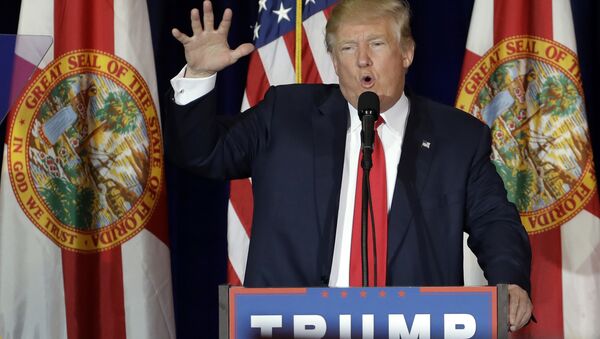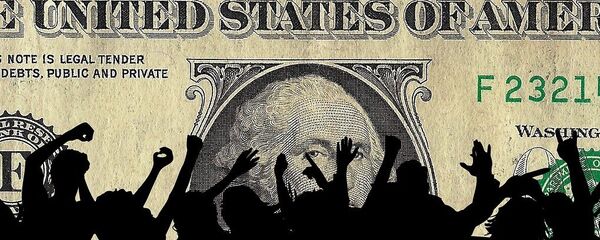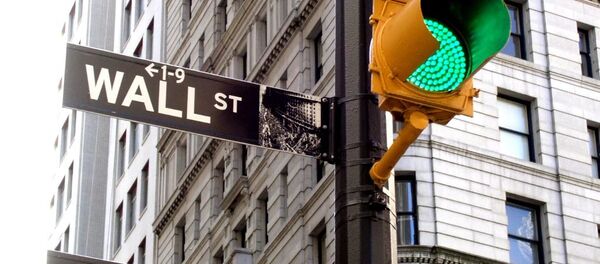Kristian Rouz – Despite the recent interest rate hikes undertaken by the Federal Reserve, gains in US inflation have been the quickest since 2012, whilst retail sales have slowed, putting consumer confidence into question.
Subsequently, the US economy might slide into stagflation, which means lack of effective economic growth amidst significant increases in consumer prices. This, in turn, would affect the quality of life of most Americans, and decisive, yet painful, Fed policy measures would be required to fix the situation. A possible answer to the looming stagflation stalemate would be sharp hikes in Fed interest rates, in a similar scenario to those undertaken in the late 1970s-early 1980s by then-Fed chair Paul Volcker.
The Federal Reserve’s Board of Governors said that US inflation might go up to an annualized 3.0 percent, which is quite tolerable after the prolonged period of near-zero inflation in the past several years. Inflation above the Fed target would compensate for the stagnant consumer prices of the previous years, balancing the longer-term inflation average at the targeted 2 percent.
"Achieving an inflation target of 2.0 percent hinges on policymakers pursuing inflation levels that are notably above 2.0 percent," Michael Kiley and John Roberts of the Fed Board wrote.
However, Fed economists said a higher inflation rate would be appropriate only in a faster growing environment. Yet, as 1Q17 US GDP growth is currently expected at 0.9 percent, the worst since the Great Recession, and consumer sentiment is exposed to the downside effects of firming inflation, growth potential is very limited.
In the twelve months prior to February 2017, US core inflation rose by 2.7 percent, which is the greatest gain since March 2012. However, retail sales posted their weakest gain since August, adding 0.1 percent in February, according to a report by the Commerce Department. Yearly gains in retail sales stood at 5.7 percent last month, suggesting consumer demand is still solid, but signs of erosion are starting to show.
The main challenge to domestic consumption, and therefore, the US GDP, is the lack of gains in worker compensation. Stagnant wages have plagued the US economy for the past two decades, and even though the labor market is near “full employment,” most US jobs are not paying enough to provide a major increase in consumer spending.
Fed board economists, however, suggested that keeping base interest rates within their current 0.75-1.00 percent gauge will compensate for the stagnant wages. A sharp increase in inflation, they suggest, might drive production output and effective wages.
Nevertheless, it most likely won’t. Low labor productivity will effectively offset the positive consequences that rising inflation could have in regard to output and worker compensation.
The combination of these interconnected factors makes the case for a stagflationary scenario quite realistic.
The fiscal stimulus package, proposed by President Donald Trump, might be a game-changer, but the chances are the US economy will slip into stagflation in the second half of 2017, before tax cuts and infrastructure spending take effect.
"A larger fiscal package could boost growth moderately more in the near-term, but a more adverse policy mix would likely lead to a significant slowdown, higher inflation and tighter policy in subsequent years,” Goldman Sachs analysts wrote.
The Federal Reserve, on their part, are going through intense internal debate currently, and the Fed Chair Janet Yellen is unlikely to put up with the inflation above 2.0 percent, as suggested by her most recent statements. That means, any overshoot in inflation will trigger another hike in base interest rates. As credit environment tightens up, US growth is likely to moderate this year before taking off due to the fiscal stimulus in 2018.
"Trump’s campaign promised to increase infrastructure spending, revitalize domestic manufacturing, improve trade terms, tighten national security, curtail immigration, reduce regulation and lower taxes," James Litinsky of JHL Capital said. "These policies are geared to boost economic growth and earnings, but they are likely to increase the cost of capital."
The implementation of economic policies, proposed by Trump, will, however, take time, whilst the gains in inflation and an ongoing slowdown in GDP growth are already a reality. This makes the current economic situation in the US quite similar to that of the late 1970s, albeit not quite that dramatic. Therefore, the Fed is poised to be more hawkish on rates, but the White House will be responsible for achieving and maintaining sustainable GDP growth in the coming years.



